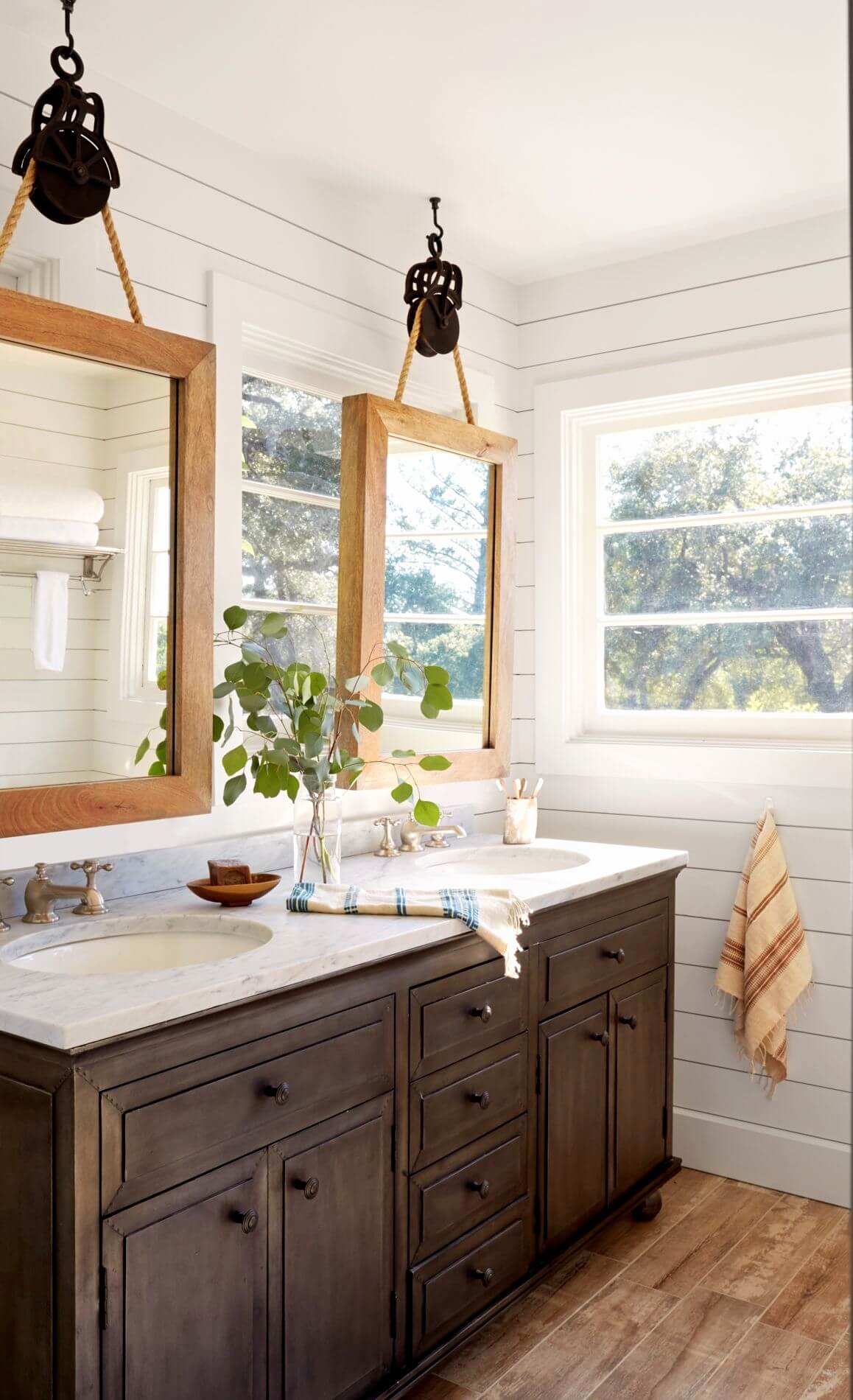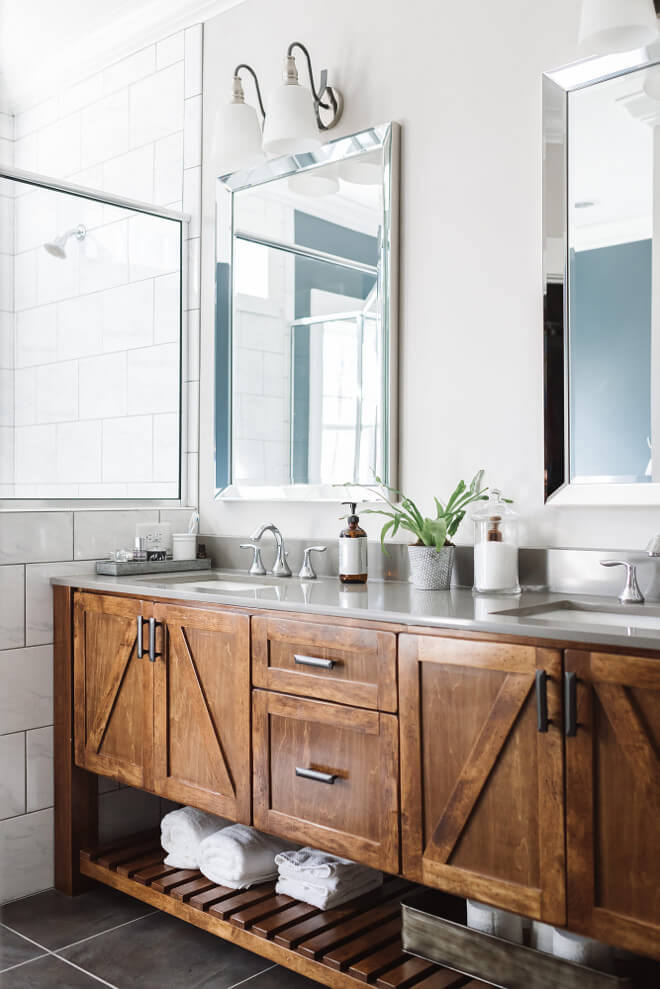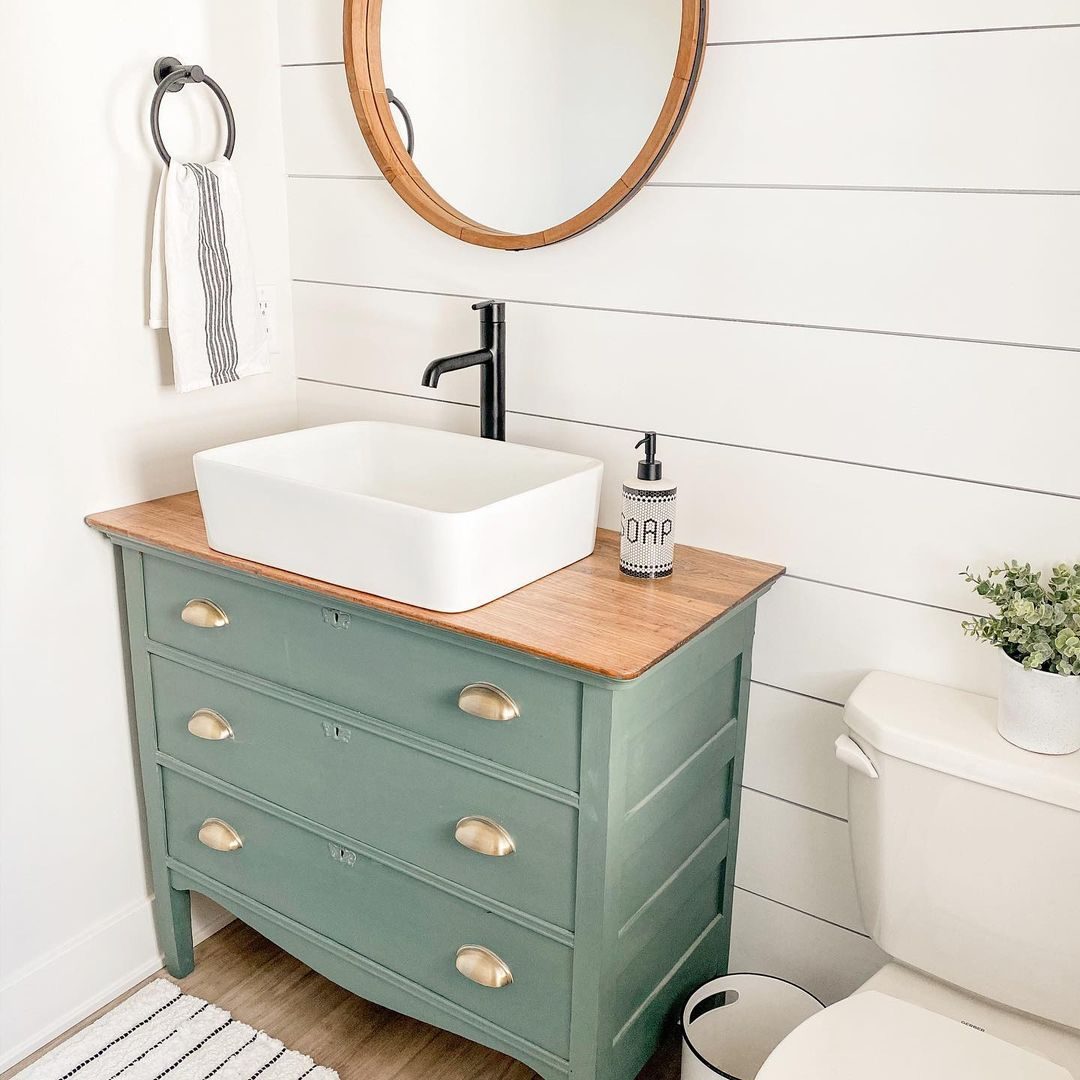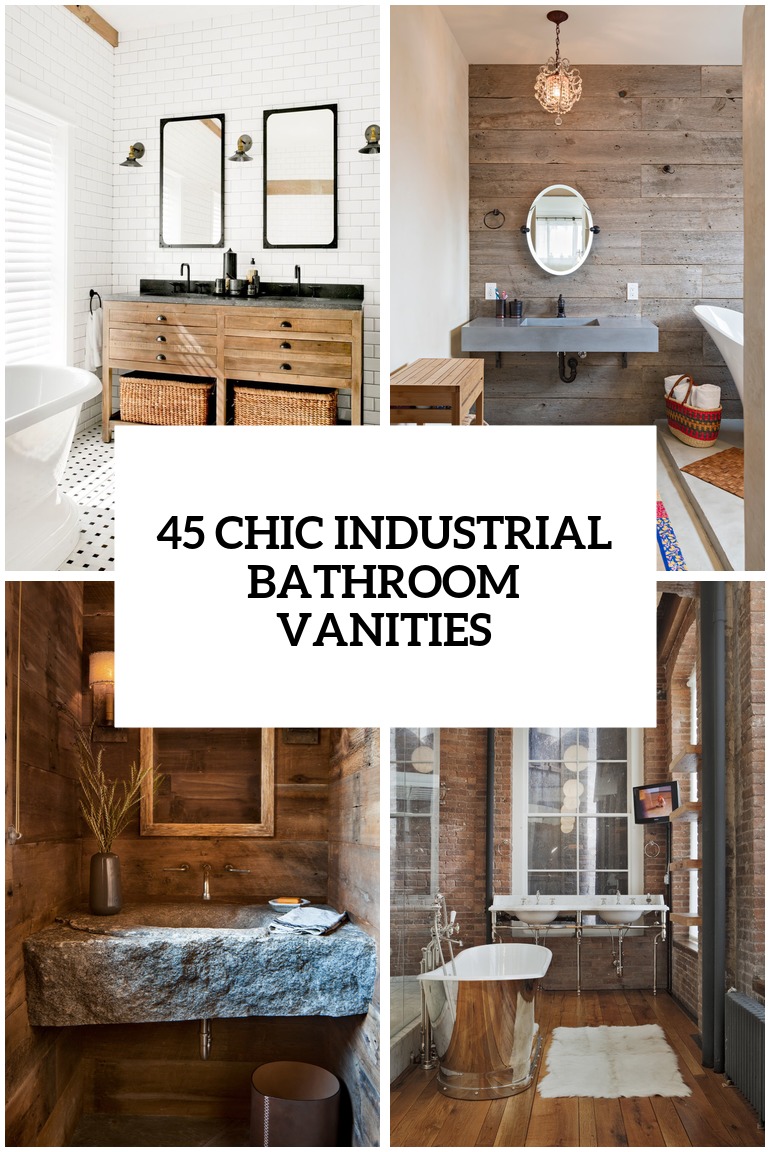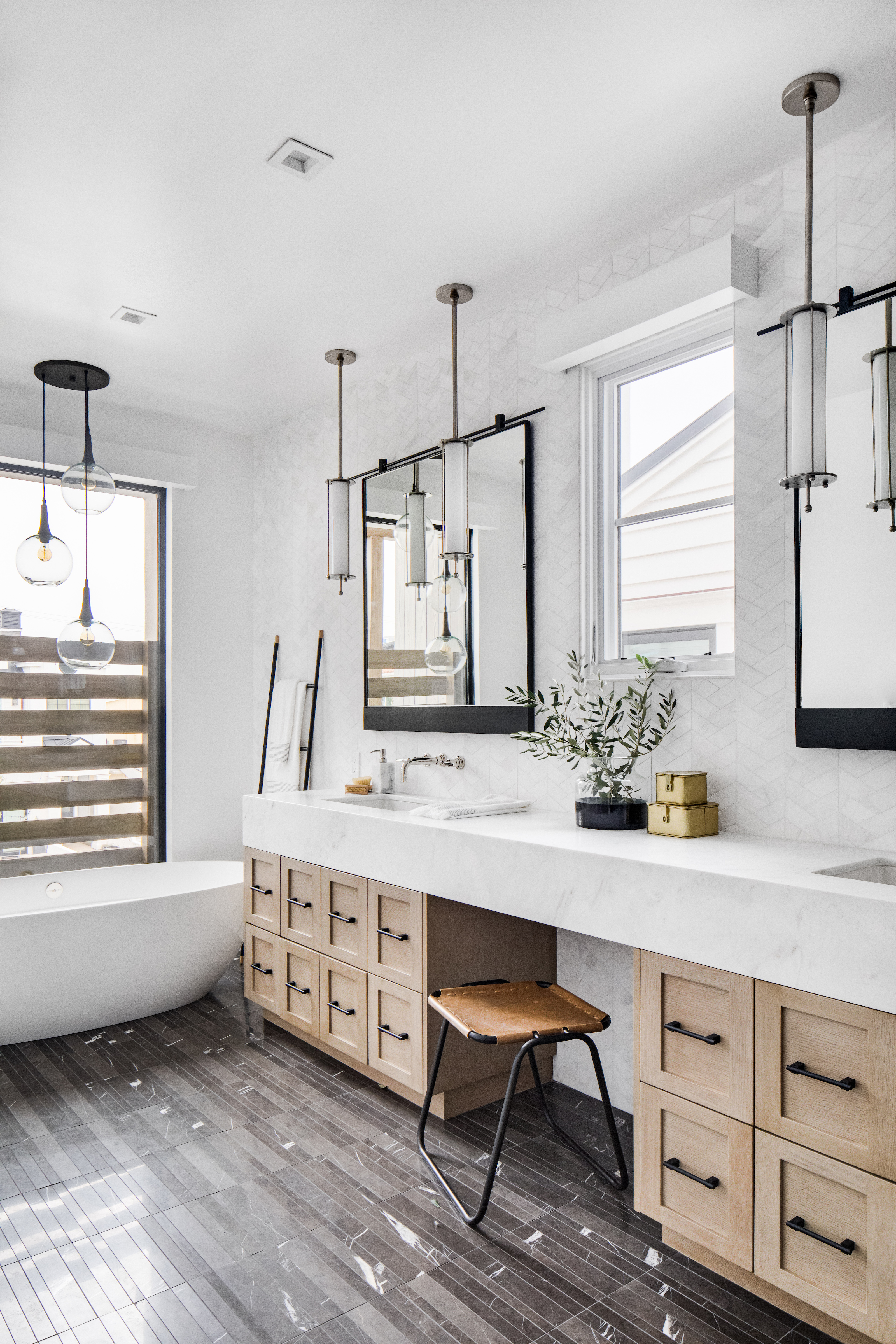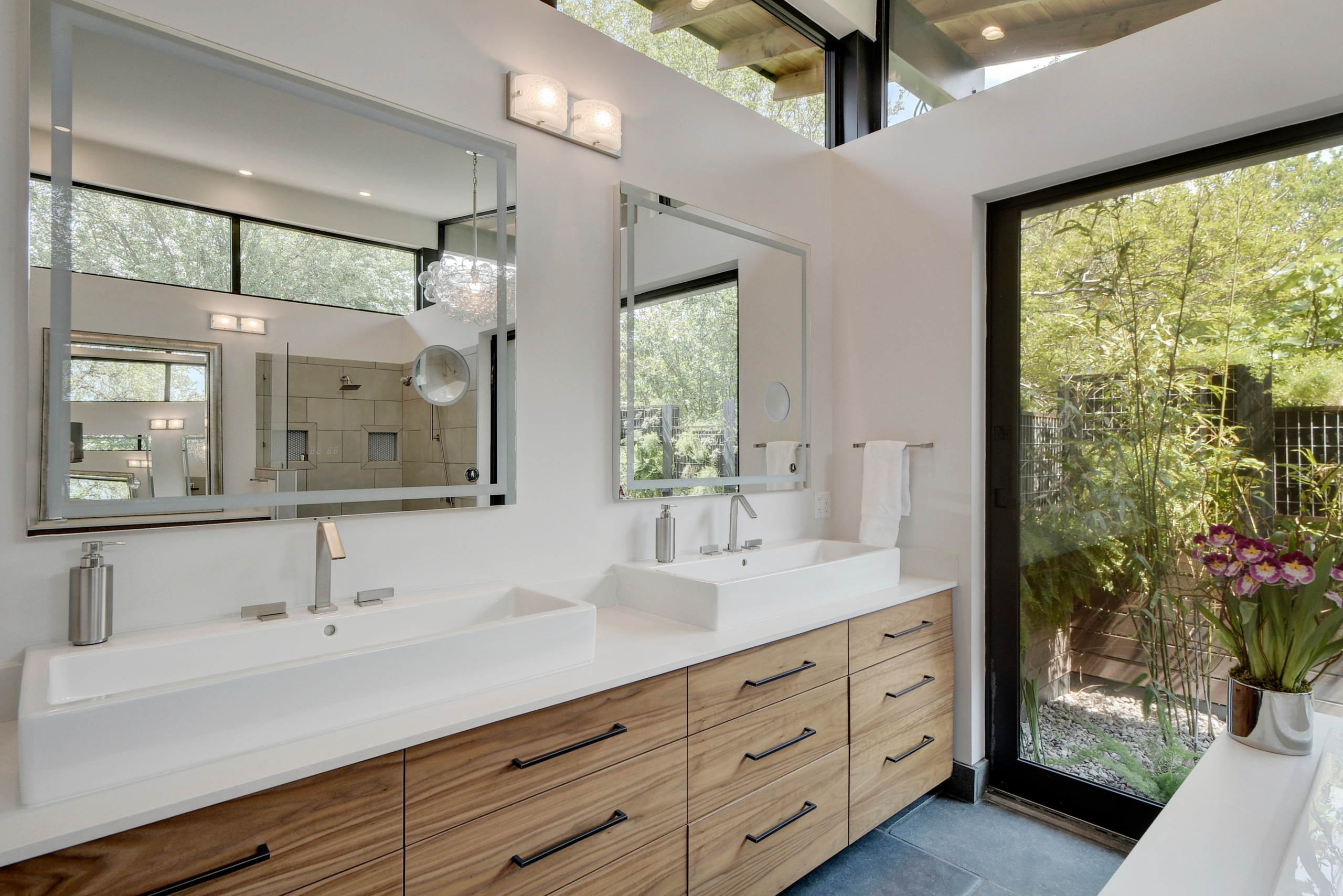Choosing the Right Type of Wood for Your Bathroom Vanity
When I first began thinking about adding a wooden vanity to my bathroom, I realized that selecting the right type of wood was crucial. The type of wood you choose influences the look, durability, and maintenance of your vanity. Bathrooms are often humid and prone to moisture, so the wood needs to stand up to these conditions while maintaining its beauty. Through my research and experience, I found that there are several popular wood types to consider, each with its unique qualities.
- Oak: A Timeless and Durable Choice Oak quickly stood out to me as one of the most common choices for bathroom vanities. Known for its strength and durability, oak is a hardwood that can handle the moisture and wear that come with being in a bathroom. I appreciated how oak vanities come in a range of finishes, from light to dark, allowing you to match them with any bathroom decor. Oak has a traditional and timeless appeal, which makes it an ideal option if you’re aiming for a classic bathroom look that can stand the test of time.
- Walnut: A Luxurious, Rich Option If you’re looking for something a little more upscale, walnut might be the wood for you. When I looked at walnut vanities, I couldn’t help but admire the deep, rich tones and the fine grain pattern. Walnut offers a more luxurious feel, making it perfect if you’re aiming for an elegant, high-end design. While walnut tends to be more expensive than other woods, I found that its durability and striking appearance made it worth the investment. Walnut can also develop a beautiful patina over time, adding even more character to the vanity.
- Maple: A Smooth, Light Option For those who prefer a lighter, more modern look, maple is a great choice. Maple wood is known for its smooth grain and pale color, making it ideal for a minimalist or contemporary bathroom design. I found that maple vanities can brighten up a small bathroom and make it feel more spacious. Maple is also a hardwood, so it’s durable enough to withstand everyday use in a bathroom. Plus, its light color can be stained or painted to match any decor, giving you plenty of flexibility in your design choices.
- Mahogany: Elegant and Exotic Mahogany is another wood that caught my eye, especially because of its warm, reddish-brown hue. This exotic hardwood brings a sense of luxury and sophistication to any bathroom. I loved how mahogany’s fine grain and rich color added warmth and depth to the space, making it perfect for creating a cozy yet elegant atmosphere. While mahogany can be pricier and requires more maintenance to preserve its finish, the visual impact it delivers is hard to beat. It’s a great option if you want your bathroom vanity to make a statement.
- Teak: Perfect for Wet Environments One of the standout options I discovered for bathroom vanities is teak. Teak is naturally resistant to moisture and humidity, which makes it an excellent choice for bathrooms. I was particularly drawn to how teak can handle the damp environment of a bathroom without warping or deteriorating over time. Its natural oils protect it from water damage, so it requires less maintenance than other woods. Teak also has a beautiful warm color that can add a touch of nature to your bathroom design. If you’re looking for a vanity that can handle moisture while looking gorgeous, teak is a top contender.
- Pine: An Affordable and Rustic Choice Finally, I explored pine, which is a softwood that’s more affordable than many hardwoods. Pine has a natural, rustic charm, which I found appealing for creating a cozy, farmhouse-style bathroom. While pine is not as durable as oak or walnut, it can still be a good option if you’re looking for a budget-friendly vanity that adds warmth to your space. Pine can be stained or painted to suit your style, though it may require more maintenance over time due to its softness. However, if you want a vanity with character and a rustic feel, pine is a great choice.

Incorporating Reclaimed Wood for a Rustic Vanity Look
When I wanted to add some character and uniqueness to my bathroom, I knew reclaimed wood would be the perfect choice for my vanity. There’s something special about using wood that has a history, and it adds an unmistakable rustic charm to the space. Reclaimed wood vanities are not only beautiful but also environmentally friendly, making them a great option if you’re looking to reduce waste and repurpose materials. As I explored this idea, I discovered a few key ways to incorporate reclaimed wood into a vanity design for that perfect rustic look.
Finding the Perfect Reclaimed Wood The first step in incorporating reclaimed wood into a bathroom vanity is finding the right material. I started by searching for local salvage yards, reclaimed wood suppliers, and even online marketplaces that specialize in reclaimed wood. I loved the idea of giving new life to wood that had been used in old barns, factories, or homes. Each piece of reclaimed wood comes with its own story, and the variations in texture, color, and grain can make the vanity a one-of-a-kind piece. The beauty of reclaimed wood lies in its imperfections, and I embraced the knots, cracks, and weathered finish as part of its charm.
Mixing and Matching for a Custom Look One thing I quickly realized is that reclaimed wood can vary greatly in appearance, so mixing and matching different pieces can create a truly unique vanity. I found that combining different wood types and finishes added depth and texture to the overall design. For example, using a darker reclaimed wood for the vanity top and lighter wood for the base created a striking contrast that highlighted the natural beauty of each piece. The mismatched look added a sense of authenticity and craftsmanship to the bathroom, which I absolutely loved.
Maintaining the Natural Patina One of the things that drew me to reclaimed wood was its natural patina – the weathered, aged look that only comes from years of exposure. I wanted to preserve that character while making sure the wood was protected from the moisture in the bathroom. I found that sealing the wood with a clear, matte finish helped maintain its rustic appearance while providing a protective barrier. I avoided glossy finishes that would detract from the natural beauty of the wood and opted for a sealant that allowed the grain and texture to shine through.
Combining Reclaimed Wood with Modern Fixtures To prevent the bathroom from feeling too old-fashioned, I paired the rustic reclaimed wood vanity with modern fixtures. The contrast between the weathered wood and sleek, contemporary faucets and hardware created a beautiful balance between old and new. I chose matte black or brushed nickel fixtures, which provided a modern touch without overpowering the rustic vanity. This mix of styles gave the bathroom a unique, eclectic feel that was both warm and stylish.
Using Reclaimed Wood as an Accent If you’re not ready to commit to a full reclaimed wood vanity, I found that using reclaimed wood as an accent can still bring a touch of rustic charm to the bathroom. Incorporating reclaimed wood in the vanity’s trim, shelves, or mirror frame adds character without overwhelming the space. I also discovered that reclaimed wood shelves placed above the vanity can create a cohesive look while providing additional storage. These small touches can make a big impact and add warmth to the bathroom without requiring a complete overhaul.
Caring for Your Reclaimed Wood Vanity While reclaimed wood is durable, I learned that it still requires some maintenance to ensure it stays in good condition, especially in a bathroom environment. I made sure to regularly wipe down the vanity to prevent water spots or stains from setting in. Using a mild wood cleaner and avoiding harsh chemicals helped protect the finish and kept the wood looking beautiful. I also re-applied the protective sealant every year or two to maintain its resistance to moisture and prevent any damage. With a little care, a reclaimed wood vanity can last for years while retaining its rustic charm.
Modern Wood Bathroom Vanities: Sleek Designs with Natural Appeal
When I started considering a modern wood vanity for my bathroom, I quickly realized how much variety there is in sleek, contemporary designs. Wood can be both rustic and refined, and modern vanities often blend these qualities beautifully. If you’re aiming for a minimalist or sophisticated bathroom, modern wood vanities offer the perfect mix of natural materials and clean lines. They bring warmth to a space without overwhelming it, allowing the beauty of the wood to speak for itself while fitting seamlessly into a modern aesthetic.
Embracing Minimalist Design One of the first things I noticed about modern wood vanities is their focus on minimalist design. The lines are clean, the edges sharp, and the overall structure simple. This simplicity allows the natural beauty of the wood to shine without unnecessary ornamentation. I’ve found that a sleek, streamlined wood vanity creates a calm and uncluttered atmosphere in the bathroom. Modern design is all about functionality, and by choosing a vanity with hidden storage or floating elements, I was able to maintain a minimalist look while still having plenty of space for bathroom essentials.
Contrasting Wood with Metal Accents A hallmark of modern design is the combination of materials, and I loved how modern wood vanities often incorporate metal accents. The contrast between the warmth of the wood and the coolness of the metal adds sophistication and depth to the design. I chose a vanity with brushed nickel handles and legs, which created a striking visual balance while keeping the overall aesthetic modern and sleek. Whether it’s matte black fixtures or polished chrome accents, metal elements can enhance the contemporary feel of a wood vanity and add an edge to the natural appeal.
Using Light Wood for an Airy Look Light wood tones like ash, maple, or birch are perfect for achieving an airy, modern bathroom look. I found that lighter wood makes the bathroom feel more open and spacious, especially when paired with white walls and clean surfaces. A light wood vanity can create a refreshing, spa-like atmosphere that feels both modern and relaxing. For small bathrooms, light wood is particularly effective because it reflects more light and gives the illusion of more space. The minimalist grain patterns of light wood also contribute to the sleekness of a modern design.
Incorporating Floating Wood Vanities Floating vanities are one of the most popular trends in modern bathroom design, and I found that wood works exceptionally well in this format. The clean, suspended look of a floating vanity creates an open and uncluttered feel in the bathroom. I opted for a floating wood vanity that highlighted the natural grain of the wood, giving the bathroom a modern yet organic look. What I love about floating vanities is that they free up floor space, making the bathroom feel larger while offering a unique design statement. They’re perfect for modern bathrooms where simplicity and functionality are key.
Mixing Wood with Stone or Glass Countertops To achieve a truly modern look, I explored vanities that combined wood with other materials like stone or glass. A wood vanity with a marble or quartz countertop, for instance, adds a luxurious touch while maintaining the clean lines of modern design. I chose a wood vanity with a glass countertop for my bathroom, and I loved how the combination of materials created a sleek, contemporary vibe. The transparency of glass allowed the beauty of the wood base to shine through, while the stone added a touch of elegance and sophistication.
Customizing the Finish for a Modern Look One of the ways I made my modern wood vanity stand out was by customizing the finish. A matte or satin finish gave the wood a sleek, contemporary look that felt perfect for a modern bathroom. Unlike traditional wood vanities that might have a glossy or rustic finish, modern vanities benefit from more subtle, understated finishes that allow the natural beauty of the wood to shine without overpowering the design. I found that by choosing a finish that complemented the overall color palette of the bathroom, I was able to create a cohesive and polished modern space.
Floating Wood Vanities: Space-Saving Elegance
When I wanted to make the most of my bathroom space without sacrificing style, I knew that a floating wood vanity would be the perfect solution. Floating vanities have become increasingly popular for their ability to create an open, airy feel in even the smallest of bathrooms. They provide the elegance of a traditional wood vanity while offering the added benefit of maximizing floor space. I loved how my floating wood vanity added a modern, minimalist touch to the bathroom while still providing plenty of functionality.
Creating the Illusion of Space One of the main reasons I chose a floating wood vanity was to make my small bathroom feel larger. By suspending the vanity off the floor, the room instantly felt more open and less cluttered. The extra visible floor space made the entire bathroom seem bigger and brighter. I found that this design trick works especially well in smaller bathrooms where every inch of space counts. Plus, the clean lines of the floating vanity contributed to the overall minimalist aesthetic I was going for.
A Seamless, Modern Look Floating wood vanities often have a sleek, seamless design that perfectly complements modern bathrooms. I loved how the vanity appeared to “float” against the wall, creating a contemporary, almost futuristic feel. The lack of visible legs or supports made the vanity look clean and simple, which fit perfectly with my modern decor. I found that pairing the floating vanity with wall-mounted fixtures and a large mirror enhanced the modern vibe while maintaining a sense of openness and lightness in the space.
Wood’s Natural Warmth Even though the vanity had a sleek, modern design, the natural warmth of the wood helped balance out the minimalism. I chose a warm-toned wood like walnut for my floating vanity, and it added a touch of coziness to the otherwise streamlined bathroom. I found that the combination of modern design and natural materials created a balanced, harmonious look that felt inviting rather than cold. Wood’s texture and grain brought in just the right amount of warmth to soften the sharp lines of the floating vanity.
Practical Storage Solutions One of the misconceptions I had about floating vanities was that they might lack storage, but I was pleasantly surprised to find that many floating vanities come with plenty of storage space. I chose a floating wood vanity with deep drawers that provided ample space for bathroom essentials while maintaining the sleek appearance. I loved that I didn’t have to sacrifice storage for style. The floating design allowed for clean, hidden storage that kept the bathroom organized and clutter-free.
Easy Cleaning and Maintenance Another benefit of the floating design is that it made cleaning the bathroom so much easier. Without legs or supports on the floor, I found that sweeping and mopping under the vanity was a breeze. I no longer had to deal with dust or dirt accumulating around the base of the vanity. This design is not only visually appealing but also incredibly practical when it comes to maintenance. Plus, the floating vanity allowed me to add decorative baskets or storage solutions underneath, which added to the overall functionality.
Making a Design Statement What I loved most about my floating wood vanity was how it became a central design feature in the bathroom. The unique floating design made the vanity stand out as a statement piece, turning what could have been a simple functional element into a focal point. The natural wood, combined with the modern design, created a stunning visual contrast that elevated the entire bathroom. If you’re looking to make a design statement while maximizing space, I found that a floating wood vanity is the way to go.
Maximizing Storage with Wood Bathroom Vanities
One of the biggest challenges I faced when designing my bathroom was finding ways to maximize storage without compromising on style. After researching several options, I found that wood bathroom vanities provide the perfect solution, blending both beauty and functionality. Wood vanities offer a variety of storage configurations, allowing you to keep your bathroom organized while adding a warm, natural aesthetic. Whether you have a large bathroom or a smaller space to work with, there are many ways to maximize storage with a wood vanity.
Incorporating Deep Drawers for Extra Space One of the most effective ways I found to increase storage in a wood vanity was by choosing a model with deep drawers. Unlike traditional cabinets that can sometimes feel cluttered, deep drawers offer a more organized way to store bathroom essentials. I appreciated how the drawers allowed me to separate items like towels, toiletries, and cleaning supplies. The best part is that everything stays neatly tucked away, and I didn’t have to compromise on the sleek design of the vanity. Deep drawers also make it easier to access items compared to traditional cabinets where you often have to rummage around to find what you need.
Using Built-In Shelves for Open Storage For those who prefer a more open look, I discovered that many wood vanities come with built-in shelves. These shelves offer additional storage while keeping things visible and within easy reach. I loved the idea of using these shelves to display rolled towels, decorative baskets, or even a few potted plants to add a touch of greenery to the bathroom. The open shelving design allowed me to showcase my bathroom essentials stylishly while still keeping the space functional. It’s a perfect balance of storage and display, making the bathroom feel inviting and organized.
Choosing a Vanity with a Linen Tower If you have a bit more room to work with, I found that adding a linen tower to your wood vanity can be a game changer in terms of storage. A linen tower is a tall, narrow cabinet that provides ample vertical storage for towels, linens, and other bulky items that often take up valuable space in smaller cabinets. I loved how the linen tower complemented the vanity, creating a cohesive look while significantly increasing the storage capacity. It’s a great option if you need extra storage but don’t want to sacrifice style or space.
Making Use of Hidden Storage Hidden storage is another feature I found extremely helpful in wood bathroom vanities. Some vanities come with hidden compartments or pull-out organizers that allow you to store smaller items like toiletries or cleaning supplies without them cluttering the countertop. I found that these hidden compartments are perfect for keeping the bathroom tidy, especially if you have limited space. The wood finish seamlessly blends with the vanity’s design, so you don’t even realize that extra storage is there until you need it. This feature kept my bathroom looking clean and minimal while still providing all the storage I needed.
Incorporating Double Vanities for Shared Bathrooms If you’re sharing a bathroom, I found that a double vanity can be an excellent way to maximize storage while giving each person their own space. With two sinks and plenty of drawer or cabinet space, a double vanity makes it easy to organize bathroom essentials separately for each user. I loved how the double vanity provided a symmetrical, balanced look in the bathroom while offering more storage than a single sink option. It’s perfect for families or couples who need the extra space but still want a stylish and functional bathroom.
Utilizing Vertical Space with Wall-Mounted Storage One trick I learned to maximize storage in my wood vanity was to make use of vertical space. Wall-mounted cabinets, shelves, or even mirrored cabinets can add extra storage without taking up valuable floor space. I found that pairing my wood vanity with a matching wood-framed mirror that had hidden storage behind it was a great way to keep small items like skincare products or medicine out of sight but easily accessible. By using the walls for additional storage, I was able to keep the countertop clutter-free and maintain a clean, organized bathroom.
Custom-Built Wood Vanities for a Personalized Bathroom Design
When I wanted to create a truly unique bathroom that reflected my style, I knew a custom-built wood vanity was the way to go. There’s something special about having a piece of furniture tailored to your exact preferences, and custom vanities allow for limitless creativity. Whether you’re working with an unusual space, need specific storage solutions, or simply want a vanity that stands out, a custom wood vanity provides the perfect opportunity to design something that fits your needs perfectly.
Designing for Your Space One of the first benefits I discovered with a custom-built wood vanity is the ability to design it specifically for your bathroom’s layout. Whether your bathroom is large, small, or has awkward corners, a custom vanity can be built to fit perfectly. I loved how I could take the dimensions of my space and create a vanity that made the most of every inch. If you’re dealing with a narrow or oddly shaped bathroom, this option allows you to customize everything from the width to the height, ensuring that the vanity is both functional and aesthetically pleasing.
Selecting the Perfect Wood Another aspect I loved about going custom was choosing the exact type of wood I wanted for my vanity. Whether you prefer a light, airy wood like maple or a dark, rich wood like walnut, the options are endless when you build a custom vanity. I spent time selecting wood that complemented the overall color scheme of my bathroom, ensuring that the grain and finish worked harmoniously with the rest of the design. With custom vanities, you’re not limited to standard wood types, which allows for greater flexibility in achieving the look you want.
Tailoring the Storage to Your Needs One of the most exciting parts of designing a custom wood vanity was tailoring the storage to fit my specific needs. I was able to choose how many drawers, shelves, and cabinets I wanted, and even decide on the size of each. This level of customization ensured that I had a place for everything, from towels to toiletries, without compromising on the vanity’s style. I included deep drawers for larger items and slim, hidden compartments for smaller essentials. The result was a highly functional vanity that was designed exactly how I needed it to be.
Choosing Unique Finishes and Hardware Custom-built wood vanities also allow you to personalize the finish and hardware to match your bathroom’s aesthetic. I loved that I could choose a matte finish for a more contemporary look or a glossy finish for a sleek, polished effect. The ability to select the hardware—whether it’s brushed nickel, matte black, or antique brass—gave me the chance to add unique details that truly made the vanity my own. These custom touches can elevate the entire bathroom design and make the vanity feel like a personalized work of art.
Creating a Focal Point in the Bathroom One of the things I appreciated most about my custom vanity was how it became the focal point of the bathroom. Because it was designed specifically for my space and tastes, it felt like a statement piece that truly reflected my style. Whether you’re going for a modern, rustic, or traditional look, a custom wood vanity can be the centerpiece that ties the whole room together. I found that the vanity set the tone for the rest of the bathroom design, making the space feel cohesive and thoughtfully curated.
Working with Skilled Craftsmen Finally, working with a skilled woodworker or furniture maker added an extra layer of satisfaction to the process. I loved being able to collaborate with a professional to bring my vision to life. Their expertise helped refine my ideas and turn them into a functional, beautiful piece of furniture. Custom wood vanities are truly a labor of love, and the craftsmanship that goes into them ensures that they are not only visually stunning but also built to last. This level of personalization and attention to detail is what makes a custom vanity worth the investment.
Wood Finishes and Stains: Enhancing the Natural Beauty of Your Vanity
As I explored different wood vanity options, I realized that choosing the right finish or stain is just as important as selecting the wood itself. A wood finish can completely change the look of your vanity, enhancing its natural beauty while also protecting it from moisture and wear. Whether you prefer a natural, rustic look or a sleek, polished appearance, the finish or stain you choose will have a major impact on the overall style of your bathroom vanity.
Embracing Natural Finishes for a Rustic Look I found that natural finishes are perfect if you want to highlight the raw beauty of the wood. A natural finish allows the wood’s grain and texture to shine through, creating a rustic, organic look that’s full of character. I loved how this type of finish brought out the knots, cracks, and variations in the wood, making each piece feel unique. Natural finishes work especially well with woods like oak, pine, and reclaimed wood, giving the vanity a warm, earthy appeal that fits perfectly in rustic or farmhouse-style bathrooms.
Choosing Matte Finishes for a Modern Aesthetic If you’re going for a more contemporary look, I discovered that a matte finish is the way to go. Matte finishes offer a sleek, understated look that works beautifully in modern or minimalist bathrooms. I chose a matte finish for my wood vanity, and I loved how it gave the wood a smooth, velvety appearance without the shine of a glossy finish. This type of finish also helped keep the vanity looking clean and polished without drawing too much attention to fingerprints or smudges, which is a big plus in a busy bathroom.
Opting for Glossy Finishes for a Sleek, Polished Look On the other hand, if you prefer a more glamorous or luxurious look, a glossy finish can make your wood vanity stand out. I’ve seen how glossy finishes can give wood a rich, polished appearance, enhancing the depth of the color and making the grain pop. A glossy finish works well in modern or high-end bathrooms where you want to create a statement piece. However, I learned that glossy finishes require a bit more maintenance to keep them looking pristine, as they tend to show scratches and fingerprints more easily.
Using Stains to Alter the Wood’s Color One of the most versatile options for customizing your wood vanity is to use stains. Stains allow you to change the wood’s color while still showcasing its natural grain and texture. I found that using a stain gave me the ability to match the vanity to my existing bathroom decor, whether I wanted a darker or lighter tone. I experimented with various stain colors, and the results were stunning. The right stain can transform a piece of wood into something that perfectly fits the overall aesthetic of your bathroom.
Applying Protective Coatings for Longevity Regardless of the finish or stain you choose, applying a protective coating is essential to ensure the longevity of your wood vanity. I learned that sealants or topcoats not only enhance the wood’s appearance but also provide a barrier against moisture and daily wear and tear. For bathrooms, where humidity levels can fluctuate, a high-quality protective coating is a must. It keeps the wood looking fresh and new, minimizing the risk of damage from water or humidity, which is crucial in a bathroom setting.
Experimenting with Two-Tone Finishes For those looking to make a bold design statement, I discovered the trend of two-tone finishes. This technique involves using different colors or finishes for the vanity’s body and its top, creating a striking visual contrast. I’ve seen examples where the base is a dark stain while the countertop features a lighter finish, and the result is stunning. Two-tone finishes can add depth and interest to your vanity while allowing you to mix and match colors that complement your overall bathroom design.
48″ Bathroom Vanity Ideas – Life On Virginia Street
DIY Bathroom Vanity Ideas The Family Handyman
Natural Wood Bathroom Vanities for Inspiration – The Coastal Oak
Bathroom with Light Wood Cabinets Ideas
Bathroom Cabinet Ideas Most People Would Love to Have
Bathroom Vanity Ideas
Related Posts:
- Modern Single Bathroom Vanity
- Corner Bathroom Vanity Ideas
- Bathroom Vanity Sink Mirror Combo
- Best Countertop Material For Bathroom Vanity
- Bathroom Vanity 17 Inches Deep
- Counter Height Bathroom Vanity Stool
- Thomasville Bathroom Vanity
- Bathroom Vanity With Hutch
- Bathroom Vanity Top Right Side Sink
- Bathroom Vanity Mirror Cabinet Combo
